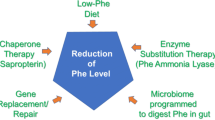Abstract
Multiple acyl-CoA dehydrogenase deficiency (MADD) is a rare autosomal recessive defect of the electron transfer flavoprotein or ubiquinone oxidoreductase, resulting in abnormal fatty acid, amino acid, and choline metabolism, leading to metabolic acidosis, hypoglycemia, “sweaty-feet” odor, and early neonatal deaths. This report presents a child diagnosed with this disease at birth by newborn screening using the mass spectrometer, who died suddenly at the age of 6 months. The echocardiogram revealed pericardial effusion, thickened ventricular musculature, and insufficiency of both the atrio-ventricular valves. The autopsy showed immense cardiomegaly, fatty infiltration, and hypertrophy of the ventricles. This is the first detailed case report of clinico-pathological correlation of MADD in an infant and brings into light a rare form of cardiomyopathy as a differential diagnosis in critically ill patients.




Similar content being viewed by others
References
Al-Essa MA, Rashed MS, Bakheet SM, Patay ZJ, Ozand PT (2000) Glutaric aciduria type II: observations in seven patients with neonatal- and late-onset disease. J Perinatol 20:120–128
Bennett MJ, Curnock DA, Engel PC, Shaw L, Gray RG, Hull D, Patrick AD, Pollitt RJ (1984) Glutaric aciduria type II: biochemical investigation and treatment of a child diagnosed prenatally. J Inherit Metab Dis 7:57–61
Bohm N, Uy J, Kiessling M, Lehnert W (1982) Multiple acyl-CoA dehydrogenation deficiency (glutaric aciduria type II), congenital polycystic kidneys, and symmetric warty dysplasia of the cerebral cortex in two newborn brothers. II. Morphology and pathogenesis. Eur J Pediatr 139:60–65
Boles RG, Buck EA, Blitzer MG, Platt MS, Cowan TM, Martin SK, Yoon H, Madsen JA, Reyes-Mugica M, Rinaldo P (1998) Retrospective biochemical screening of fatty acid oxidation disorders in postmortem livers of 418 cases of sudden death in the first year of life. J Pediatr 132:924–933
Chace DH, Kalas TA, Naylor EW (2003) Use of tandem mass spectrometry for multianalyte screening of dried blood specimens from newborns. Clin Chem 49:1797–1817
Colevas AD, Edwards JL, Hruban RH, Mitchell GA, Valle D, Hutchins GM (1988) Glutaric acidemia type II. Comparison of pathologic features in two infants. Arch Pathol Lab Med 112:1133–1139
Domizio S, Romanelli A, Brindisino P, Puglielli C, Conte E, Domizio R, Sgarrella MC, Sabatino G (2005) Glutaric aciduria type II: a case report. Int J Immunopathol Pharmacol 18:805–808
Galloway JH, Cartwright IJ, Bennett MJ (1987) Abnormal myocardial lipid composition in an infant with type II glutaric aciduria. J Lipid Res 28:279–284
Goodman SI, McCabe ER, Fennessey PV, Mace JW (1980) Multiple acyl-CoA dehydrogenase deficiency (glutaric aciduria type II) with transient hypersarcosinemia and sarcosinuria; possible inherited deficiency of an electron transfer flavoprotein. Pediatr Res:14:12–17
Goodman SI, Stene DO, McCabe ER, Norenberg MD, Shikes RH, Stumpf DA, Blackburn GK (1982) Glutaric acidemia type II: clinical, biochemical, and morphologic considerations. J Pediatr 100:946–950
Goodman SI, Reale M, Berlow S (1983) Glutaric acidemia type II: a form with deleterious intrauterine effects. J Pediatr 102:411–413
Gordon N (2006) Glutaric aciduria types I and II. Brain Dev 28:136–140
Harkin JC, Gill WL, Shapira E (1986) Glutaric acidemia type II. Phenotypic findings and ultrastructural studies of brain and kidney. Arch Pathol Lab Med 110:399–401
Hockey A, Knowles S, Davies D, Carey W, Hurst J, Goldblatt J (1993) Glutaric aciduria type II, an unusual cause of prenatal polycystic kidneys: report of prenatal diagnosis and confirmation of autosomal recessive inheritance. Birth Defects Orig Article Ser 29:373–382
Kamiya M, Eimoto T, Kishimoto H, et al. (1990) Glutaric aciduria type II: autopsy study of a case with electron-transferring flavoprotein dehydrogenase deficiency. Pediatr Pathol 10:1007–1019
Medlock MD, Rhead WJ, Pollack L, Meredith JT, Pearl G, Reece C (1991) A case of glutaric acidemia type II (severe multiple acyl-CoA dehydrogenation disorder) with subsequent prenatal exclusion in a sibling. J Perinatol 11:227–230
Niederwieser A, Steinmann B, Exner U, Neuheiser F, Redweik U, Wang M, Rampini S, Wendel U (1983) Multiple acyl-CoA dehydrogenation deficiency (MADD) in a boy with nonketotic hypoglycemia, hepatomegaly, muscle hypotonia and cardiomyopathy. Detection of N-isovalerylglutamic acid and its monoamide. Helv Paediatr Acta 38:9–26
Przyrembel H, Wendel U, Becker K, Bremer HJ, Bruinvis L, Ketting D, Wadman SK (1976) Glutaric aciduria type II: report on a previously undescribed metabolic disorder. Clin Chim Acta 66:227–239
Slukvin II, Salamat MS, Chandra S (2002) Morphologic studies of the placenta and autopsy findings in neonatal-onset glutaric acidemia type II. Pediatr Dev Pathol 5:315–321
Sweetman L, Nyhan WL, Tauner DA, Merritt TA, Singh M (1980) Glutaric aciduria Type II. J Pediatr 96:1020–1026
Van Hove JL, Grunewald S, Jaeken J, Demaerel P, Declercq PE, Bourdoux P, Niezen-Koning K, Deanfeld JE, Leonard JV (2003) d,l-3-Hydroxybutyrate treatment of multiple acyl-CoA dehydrogenase deficiency (MADD). Lancet 361:1433–1435
Wilson GN, de Chadarevian JP, Kaplan P, Loehr JP, Frerman FE, Goodman SI (1989) Glutaric aciduria type II: review of the phenotype and report of an unusual glomerulopathy. Am J Med Genet 32:395–401
Acknowledgments
We express our sincere thanks to Sunita J. Ferns and Kristina Borgen for helping us in the echocardiogram and microscopy of the heart, respectively. We also thank the family of the patient for consenting to publish this report.
Author information
Authors and Affiliations
Corresponding author
Rights and permissions
About this article
Cite this article
Singla, M., Guzman, G., Griffin, A.J. et al. Cardiomyopathy in Multiple Acyl-CoA Dehydrogenase Deficiency. Pediatr Cardiol 29, 446–451 (2008). https://doi.org/10.1007/s00246-007-9119-6
Received:
Accepted:
Published:
Issue Date:
DOI: https://doi.org/10.1007/s00246-007-9119-6




